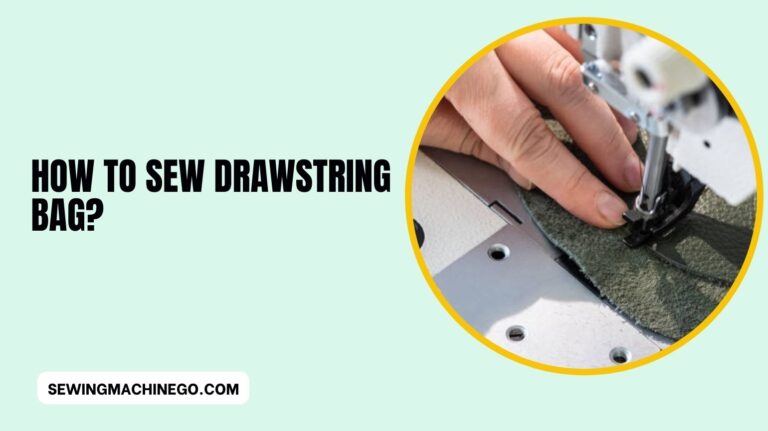How to Sew Knitting Seams? (Best Ways Guide) In 2024
Knitting a project is only half the journey; the magic truly happens when those individual pieces come together seamlessly.
How to Sew Knitting Seams? Seamwork can elevate your knitting from a collection of parts to a beautifully unified whole.
In this comprehensive guide, we’ll explore the art of sewing knitting seams, ensuring your finished piece looks and feels exceptional.

Introduction to Knitting Seams
Understanding the significance of seamless knitting sets the stage for mastering seamwork. Seamlessness isn’t just about aesthetics; it’s about functionality and durability too.
Seamwork not only connects different sections of your knitting project but also reinforces it, ensuring longevity.
Types of Knitting Seams
When it comes to knitting seams, various techniques cater to different textures, yarn types, and project designs. Each seam has its unique characteristics and purposes, influencing the final appearance and structure of your knitted piece.
Here are some common types:
1. Mattress Stitch
This technique creates nearly invisible seams on stockinette stitch pieces.
It’s perfect for joining side seams on garments or connecting panels seamlessly. By mimicking the knit stitches, it provides a smooth finish without bulk.
2. Whip Stitch
Ideal for bulky yarns or decorative seams, the whip stitch is quick and straightforward. It works well for connecting pieces that have a different stitch count or when you want a more visible seam for design purposes.
3. Backstitch
Known for its strength, the backstitch creates a durable seam suitable for heavier fabrics or pieces that require extra reinforcement. It’s commonly used in assembling garments and securing edges.
4. Grafting (Kitchener Stitch)
This technique is used for joining live stitches seamlessly, often seen in toe-up socks or when closing the toe of mittens. It creates an invisible join, mimicking the knitting pattern, making it challenging to spot the seam.
5. Three-Needle Bind-Off
Perfect for shoulder seams or any joint where you need a sturdy, visible seam on the outside, the three-needle bind-off is quick and efficient. It provides a neat, finished look while securely connecting two pieces.
6. Invisible Seam
Also referred to as the ‘mattress stitch for garter stitch,’ this technique seamlessly joins garter stitch pieces, creating a nearly invisible seam on the right side while maintaining the stitch pattern.
7. Flat Seams
Commonly used in toys or pieces where bulk is undesirable, flat seams are created by placing the right sides together and sewing through both loops of the edge stitches, resulting in a flat, tidy finish.
8. Overcast Stitch
Primarily used for connecting edges or joining pieces made from delicate or openwork patterns, the overcast stitch provides a decorative edge while holding pieces together securely.
Preparing Your Knitting for Seaming
Proper preparation is key. Blocking your work and understanding stitch counts lay the foundation for successful seaming.
This section delves into the importance of these preparatory steps and how they contribute to impeccable seamwork.
Basic Techniques for Seaming
Mastering fundamental techniques like mattress stitch and whip stitch is fundamental. We’ll walk through step-by-step instructions for executing these techniques effectively, providing clarity and confidence in your seaming abilities.
Here, we’ll explore two primary methods that form the foundation of successful seamwork.
- Mattress Stitch:
- Perfect for joining vertical seams on pieces like sweater sides.
- Mimics the knit stitches, creating an almost invisible seam.
- Whip Stitch:
- Ideal for bulky yarns or contrasting seams.
- Offers a visible seam, suitable for decorative purposes.
- Backstitch:
- Known for its strength.
- Great for assembling garments and providing extra reinforcement.
Mastering these basic techniques is fundamental for connecting knitted pieces seamlessly, whether you’re working on garments, accessories, or other knitting projects.
Advanced Seaming Techniques
For those seeking a flawless finish, advanced techniques like grafting and three-needle bind-off offer seamless joins and invisible seams. These techniques require precision and practice, but the results speak for themselves.
Grafting (Kitchener Stitch)
Used for joining live stitches seamlessly, such as in sock toes or mitten tips. Creates an invisible join mimicking the knitting pattern for an undetectable seam.
Three-Needle Bind-Off
Ideal for sturdy, visible seams like shoulder joins. Provides a neat finish while securely connecting two pieces with efficiency.
Invisible Seam (Garter Stitch)
Seamlessly joins garter stitch pieces, creating an almost invisible seam on the right side while maintaining the stitch pattern.
Flat Seams
Perfect for toys or pieces requiring minimal bulk. Sewing through both loops of edge stitches creates a tidy, flat finish.
Overcast Stitch
Ideal for delicate or openwork patterns, providing both a decorative edge and secure join between pieces.
Troubleshooting Common Seaming Problems
Seaming isn’t always smooth sailing. Tackling issues like uneven tension and gaps in seams is part of the process. We’ll discuss common problems and effective solutions to overcome them, ensuring your project remains pristine.
Even with mastery of seaming techniques, occasional challenges can arise. Understanding and addressing these issues can salvage your project and ensure a polished finish.
1. Uneven Tension in Seams
Uneven tension can lead to visible discrepancies in the seam, disrupting the overall look of the piece.
Solution:
- Consistent Stitch Size: Pay attention to maintaining consistent tension while seaming. Keep an eye on the tightness of your stitches to ensure uniformity throughout.
- Practice and Patience: Practice the seaming technique on a sample piece to gauge and adjust your tension before working on the actual project.
2. Gaps in Seams
Gaps between stitches in the seam can occur, especially when using larger needles or thicker yarn.
Solution:
- Adjust Stitch Placement: Ensure stitches are aligned correctly before sewing. Manipulate the tension slightly to snug up the stitches without making them too tight.
- Use a Tail to Close Gaps: When noticing gaps forming, use the seaming yarn tail to close these spaces by weaving them through adjacent stitches.
3. Misaligned Seams
When seams don’t align properly, it can affect the symmetry and overall appearance of the project.
Solution:
- Careful Stitch Placement: Take extra care to match the corresponding stitches on both sides, ensuring they align seamlessly before securing the seam.
- Check Consistency: Consistently check the alignment as you progress through the seaming process to catch misalignments early and rectify them promptly.
4. Bulky or Uneven Seams
Excessive bulk or irregular thickness in the seams can distort the shape of the finished piece.
Solution:
- Trim Excess Yarn: Trim excess yarn after seaming to reduce bulkiness without compromising the strength of the seam.
- Use Correct Tension: Maintain an even tension while seaming to prevent unnecessary bulk or irregular thickness.
5. Difficulty in Joining Pieces
Difficulty joining pieces could result from inaccurate stitch counts or misalignment.
Solution:
- Double-Check Stitch Counts: Ensure the stitch counts match between the pieces you’re joining and the edges are aligned correctly before seaming.
- Reevaluate Technique: If encountering persistent challenges, consider revisiting the technique used or practicing on scrap material to refine your approach.
Addressing these common seaming problems empowers knitters to troubleshoot issues effectively, ensuring a seamless and professional finish to their knitting projects.
Finishing Touches
Once the seams are in place, it’s time for the finishing touches. Weaving in ends and final blocking after seaming contribute to a polished final product.
These steps might seem minor, but they significantly impact the overall look and feel of your project.
People also ask
What is the best way to join seams in knitting?
The best way to join seams in knitting often depends on the project and desired finish. However, the mattress stitch is widely regarded as one of the best techniques.
It creates nearly invisible seams on stockinette stitch pieces, offering a seamless, professional look without adding bulk.
How do you join seamlessly in knitting?
To join seamlessly in knitting, use techniques like the mattress stitch or grafting (Kitchener stitch).
These methods create nearly invisible joins, seamlessly blending knit pieces together without noticeable seams, resulting in a polished and professional finish.
How to do a seamless stitch knitting?
To achieve seamless knitting, utilize techniques like circular knitting with no seams or methods such as the provisional cast-on combined with grafting (Kitchener stitch) to invisibly join the edges, ensuring a smooth and uninterrupted fabric appearance.
How do you sew up a flat seam in knitting?
To sew up a flat seam in knitting, place the pieces with right sides together.
Using a yarn needle, sew through both loops of the edge stitches, creating a neat, flat join that blends seamlessly into the fabric without adding bulk.
Conclusion – How to Sew Knitting Seams?
In Conclusion, Mastering the art of sewing knitting seams is a transformative skill that elevates your knitting projects to new heights.
With practice and attention to detail, you’ll soon be seamlessly connecting your knitting pieces with confidence and finesse.

Hi, I am Alice, and I am your perfect guide to the world of sewing machines. With over 10 years of experience in the sewing industry, I am passionate about sharing my knowledge and expertise to help you make the most of your sewing journey. about me






